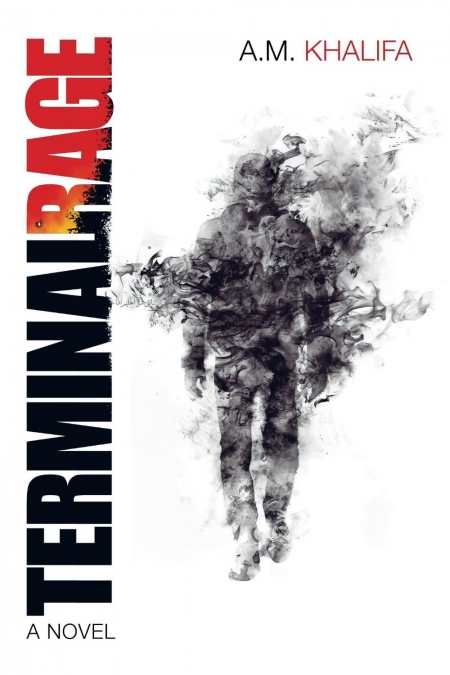Terminal Rage
Khalifa keeps the story excitingly unpredictable and lays out a plot so twisted that the puzzle picture morphs as more pieces are added.
With an international scope and surprising plot twists, A. M. Khalifa storms the thriller scene with his debut novel, Terminal Rage. The action begins with the kind of high-stakes situation usually found at the climax of a novel: twenty-five hostages holed up on the thirty-ninth floor of a Manhattan skyscraper, the threat of four random child care centers wired with explosives, and a proposal to exchange a kidnapped senator’s daughter for the release of two terrorists from an Egyptian prison. Khalifa manages to up the ante as the story progresses, though, and creates a roller coaster of a novel that whips left just when you thought it would go right.
The protagonist is former Special Agent Alexander Blackwell, who thought his hostage negotiation days with the FBI were far behind him. Enter a villain, Seth, the hostage-taking, bomb-threatening, daughter-kidnapping terrorist who refuses to speak to anyone but Blackwell. Forced to return to the job that catapulted him into a psychological break four years earlier, Blackwell must decode who this enigmatic terrorist is or face losing hundreds of lives and his own sanity to boot.
The point of view alternates between Blackwell and Seth, allowing Khalifa to build the complexity of both characters in a way that wouldn’t be possible otherwise. Seth is perhaps the more interesting of the two, exhibiting extreme behaviors that seem contradictory. For example, before he leaves California for the planned mayhem in New York, he swings by a brothel known to exploit trafficked girls and rescues them.
There is plenty of sex and violence in Terminal Rage, but it never crosses the line into being gratuitous. In fact, there is little unnecessary information in the story line, allowing it to move along quickly while keeping the plot points clear.
The drama is set against the backdrop of a decade’s worth of unrest in Egypt and the current aftermath of the fall of Mubarak. The action takes place all over the world—in the United States, Europe, the Middle East, and Australia—and spans from 2005 through the present day. Although the novel jumps around in time and place, headings at the beginning of each chapter designate the date and location of the events following, successfully avoiding any confusion.
Little information is given about the author, aside from the facts that he divides his time between Sydney, Los Angeles, and Rome, and speaks a number of different languages. His international travel and knowledge are clearly displayed in this novel, with concrete descriptions of settings ranging from a hellish Egyptian prison marooned in the depths of the desert to a cozy Sydney suburb with fashionable mothers sipping coffee at a trendy café while “their designer toddlers played near the fountain in the courtyard.”
Khalifa manages to pull off something that is often difficult to do in the crime-thriller genre—he keeps the novel unpredictable and lays out a plot so twisted that the puzzle picture morphs as more pieces are added. Though the lack of information about Khalifa makes him seem as enigmatic as the villain in his book, his writing speaks for itself. The mixture of clear, concise action, out-of-the-box characters, global settings, and didn’t-see-that-coming twists creates a craving for more when the last page is turned.
Reviewed by
Christine Canfield
Disclosure: This article is not an endorsement, but a review. The publisher of this book provided free copies of the book and paid a small fee to have their book reviewed by a professional reviewer. Foreword Reviews and Clarion Reviews make no guarantee that the publisher will receive a positive review. Foreword Magazine, Inc. is disclosing this in accordance with the Federal Trade Commission’s 16 CFR, Part 255.

